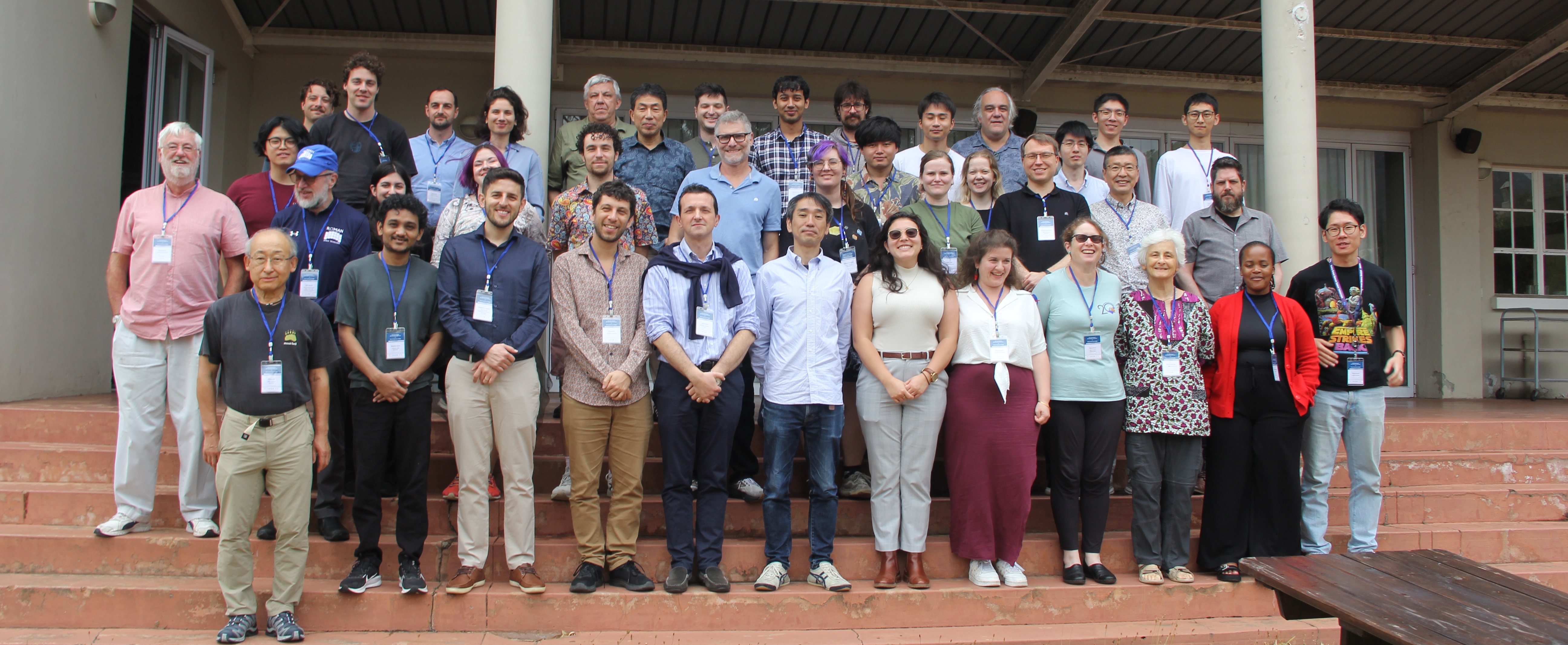27th International Microlensing Conference
27th-31st January, 2025

The 27th annual International Microlensing Conference took place in January 2025 at the South African Astronomical Observatory (SAAO) in Cape Town, South Africa. The 3-day conference included many presentations from RGES PIT members (see list below).
On the final day of the conference, 31 January 2025, there was an excursion to the Sutherland Observatory for the opening ceremony of the PRIME telescope. PRIME is monitoring Galactic Bulge fields for microlensing events in the near-infrared H-band. This covers similar wavelengths that Roman will observe in, and PRIME also utilizes the same H4RG-10 detectors that Roman will use on its wide-field imager (WFI).
A list of presentations that were given by RGES PIT membership is below:
Talks
-
Constraining Microlensing Events with Space Telescopes (HST, JWST, and ROMAN) (J. Anderson).
-
Bias in Fitting Simulated Microlensing Lightcurves from PopSyCLE in Preparation for Roman and Rubin (N. Abrams).
-
From Roman observations to cold planet demographics: a summary of the MSOS pipelines (E. Bachelet).
-
The Occurance Rate for Exoplanets Oribiting Beyond the Snow Line as a Function of Host Star Mass (D. Bennett).
-
First results from the PRIME Galactic Bulge Survey (I. Bond).
-
The constant evolution of microlensing modeling algorithms in RTModel (V. Bozza).
-
Free-floating planets as a probe of planetary formation in the era of Roman (W. DeRocco).
-
Hot, Warm, Cold, and Frigid Exoplanets from the Nancy Grace Roman Space Telescope (S. Gaudi).
-
Astrometric Microlensing Searches for Black Holes from the Ground and Space (M. Huston).
-
To Include or Not to Include Orbital Motion in Planetary Microlensing Models? (S. Ishitani Silva).
-
Towards a standard model for exoplanet demographics in the era of Roman (E. Kerins).
-
Preparing for Rubin: Lessons from wide field area surveys (K. Kruszyńska).
-
The Milky Way’s Black Hole Population (J. Lu).
-
Development of a Research Guide for New Microlensers (A. Malpas).
-
Observations of microlensing events with dual-field interferometry (P. Mroz).
-
Detectability of Circumbinary Planets in the Roman Microlensing Survey (A. Murlidhar).
-
Lens Flux Analysis of Gravitational Microlensing Events with Roman Space Telescope (H. Verma).
-
Exploring multi-planetary systems with the Roman Space Telescope (V. Saggese).
-
Prospects for Microlensing in the Early Years of LSST (R. Street).
-
Status of the PRIME NIR telescope (T. Sumi).
-
Microlensing Planet Mass-ratio function from MOA-II and KMTNet Surveys (D. Suzuki).
-
The KMTNet AnomalyFinder and Mass-ratio Function (W. Zang).
Posters
-
Early Results of the DECam Faint Source Microlensing Survey (A. Crisp).
-
Exploring the higher-order effects of MOA-2010-BLG-328 (A. Vandorou).